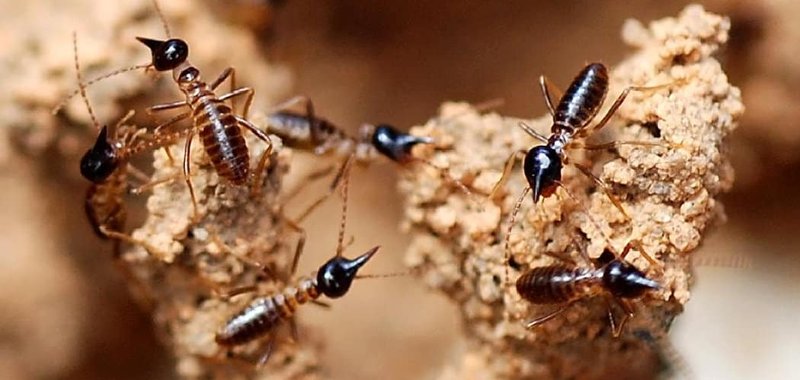
Picture this: a bustling colony of termites working harmoniously together, each one playing its part to create an extraordinary underground world. That image can stir the imagination, right? In many cultures, termites are seen as symbols of social unity and industriousness. Their diligent nature provides a striking contrast to the way we often view them in a negative light. So, what’s the deeper significance behind these fascinating insects? Let’s explore the cultural symbolism of the termite and uncover the layers of meaning they hold.
Termites Through History
Throughout history, termites have been mentioned in various texts and folklore. In some ancient cultures, these insects represented industriousness and hard work. For instance, in parts of Africa, termites are viewed as a symbol of community, illustrating how collaboration can lead to significant results. Just as a termite colony functions through teamwork, these societies often emphasize the importance of working together for a common goal.
Moreover, ancient civilizations recognized the intelligence of termites. The Mayan civilization included these creatures in their agricultural practices. They understood the ecological role termites play in enriching the soil, making them a kind of unsung hero in their farming systems. So, while we often think of them in destructive terms, there’s a rich history of respect and appreciation for their contributions to the environment.
Termites in Folklore and Mythology
In various folktales, termites appear as symbols of resilience and survival. For example, in African folklore, there are stories about how termites teach lessons about patience and hard work. One tale recounts how a termite persevered against nature’s odds, showcasing the idea that persistence pays off. This resonates with many communities, reinforcing the belief that hard work and determination can lead to success.
Additionally, in some Indigenous cultures, termites are associated with transformation. They break down the old to create new life, reminding us that sometimes we need to let go of the past to make way for growth. This theme of renewal is powerful and can be inspiring when we think about personal or communal development. You might see this echoed in stories or rituals that emphasize the cycle of life and the importance of embracing change.
Termites as Symbols of Community
One of the most striking features of termites is their social structure. Termites live in colonies that can consist of thousands, even millions, of individuals working towards a common purpose. This characteristic makes them a perfect symbol of community and cooperation. In cultures around the world, such as those in Australia and South America, termites illustrate how collaboration can lead to the creation of complex societies.
In many communities, the concept of unity is vital. Just like the termite colony, individuals are encouraged to come together, share responsibilities, and support one another. This symbolism resonates deeply, especially in times of crisis or collective challenges. Communities often pull together like a colony of termites, using their unique strengths to support one another and thrive as a group.
Lessons from Termites: Hard Work and Sustainability
The industrious nature of termites serves as a reminder of the value of hard work. These little insects spend their lives tirelessly building and maintaining their nests. For many cultures, this trait emphasizes the importance of dedication and commitment. In a world where immediate gratification is highly valued, the slow, steady work of termites encourages us to appreciate the process and put in the effort.
Termites also play a crucial role in sustainability. By breaking down dead plant material, they contribute to nutrient cycling in ecosystems, making them vital for soil health. This ecological function leads to the idea that hard work can yield lasting benefits, a theme echoed in many cultures that prioritize environmental stewardship. Sustainability is becoming increasingly important in today’s world, and the teachings of termites can inspire us to be more mindful of our relationship with nature.
Modern Interpretations of Termite Symbolism
In contemporary society, the symbolism of termites has evolved. With increased awareness of environmental issues, termites are often viewed as part of the conversation surrounding sustainability and ecological balance. Many people appreciate the role that termites play in their ecosystems, emphasizing their importance in maintaining healthy environments.
This shift in perspective has led artists and writers to use termites as symbols in their works. For example, you might find references to termites in poetry or literature that explores themes of growth and decay. In art, termites can represent the interconnectedness of life, using their colonies as a metaphor for the complexity of human relationships. Just like a termite colony, our lives are woven together in intricate ways.
Termites might be small, but their cultural symbolism is anything but insignificant. They represent hard work, perseverance, community, and even sustainability. By rethinking how we view these insects, we can draw valuable lessons that apply to our own lives.
Next time you hear about termites, challenge yourself to see beyond their reputation as pests. Instead, consider what they teach us about cooperation and resilience. Just like their colonies, our communities thrive when we work together, support one another, and embrace the cycles of growth and change. In appreciating the symbolism of the termite, we can find inspiration for our own journeys.
